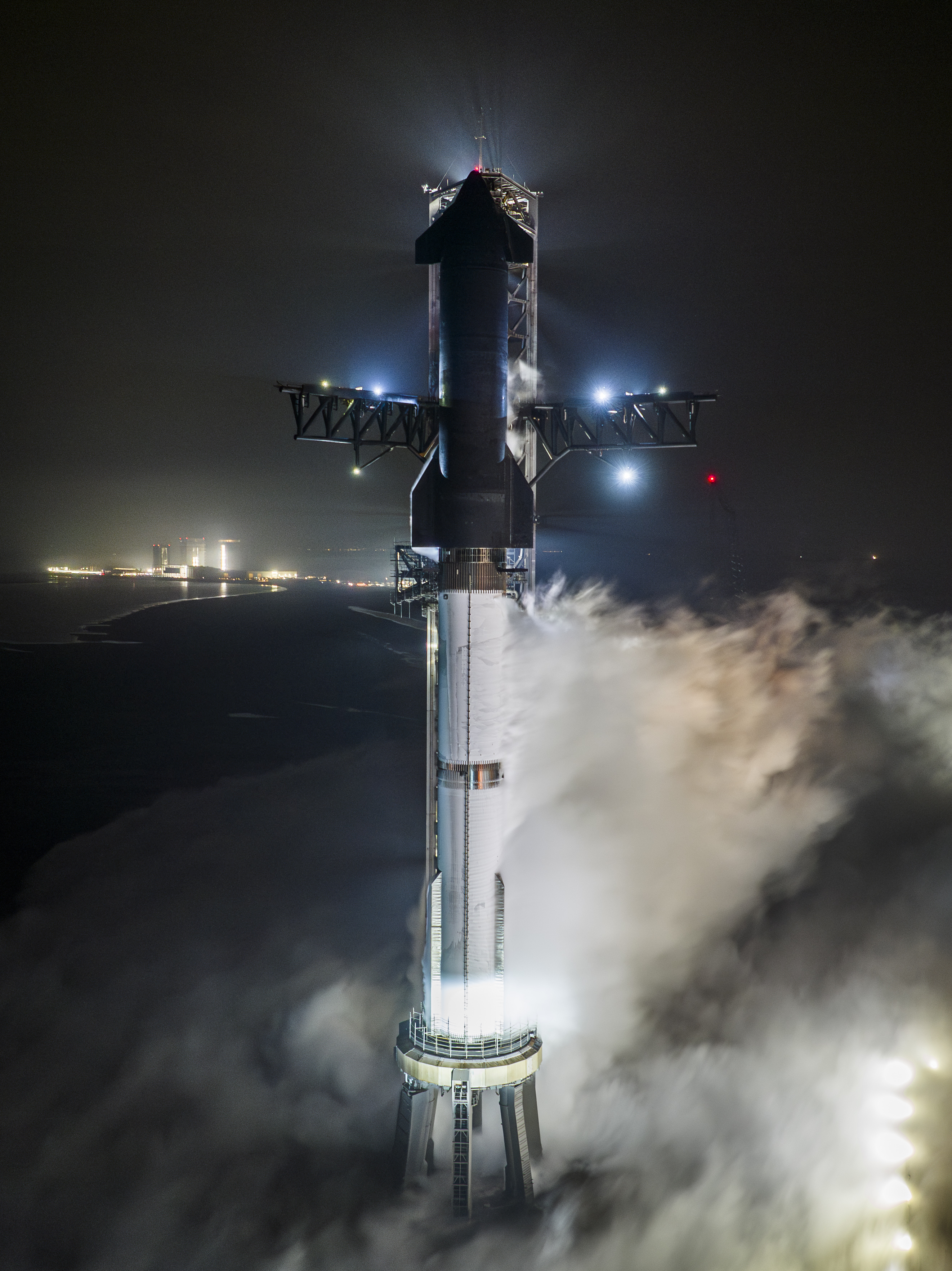During the upcoming third test flight of a fully assembled Starship rocket from SpaceX, the successful space company is going to push new boundaries. For example, during this third test flight, the American space company plans to open the doors of the Starship spacecraft's cargo bay for the first time. In addition, they are also going to attempt to crash the Starship spacecraft into the Indian Ocean instead of splashing down at the Pacific Ocean.
The main goal of this third test flight is to launch the Starship spacecraft into space. During the two previous test flights, it failed to do so. Now if SpaceX does succeed in putting Starship into orbit around our planet, they will attempt for the first time to open the doors of the unmanned spacecraft's cargo bay. This is an important test as the giant cargo hold of the Starship spacecraft is to carry numerous satellites, space telescopes and components for space stations into space in the future. For example, Starship can carry as much as 100 metric tons of cargo into low Earth orbit thanks to its large cargo bay. In addition, SpaceX also plans to reignite a Raptor rocket engine for the first time when Starship is in space. If successful, Starship can be returned to Earth's atmosphere in a controlled manner. Also during this third test flight, SpaceX plans to test the technology of transferring fuel in space. Transferring fuel from one spacecraft to another in space is very important to SpaceX as this technology will ensure that humans can travel back to the moon and even beyond. The return to Earth during this third test flight is also planned differently from the previous two test flights. For example, Starship is to crash in the Indian Ocean this time instead of the Pacific Ocean.
During the first test flight, in April 2023, the two stages of the Starship rocket failed to separate from each other as planned and the spacecraft was intentionally detonated about four minutes after launch. Starship performed much better during its second test flight, launched in November 2023. The unmanned spacecraft had a nominal burn of the Super Heavy lower rocket stage and the two stages subsequently separated as planned. The Starship spacecraft eventually exploded about eight minutes after launch during a liquid oxygen vent. That likely would not have happened during an operational flight, according to SpaceX founder and CEO Elon Musk. "Normally we wouldn't have that liquid oxygen if we had a payload," Musk said in an update SpaceX posted on X on Jan. 12. "So, ironically, if Starship had a payload, it would have reached orbit." The third test flight of a Starship is scheduled for Thursday, March 14, 2024, at the earliest.
Most powerful rocket
The new Starship spacecraft is as much as 50 meters long, has a diameter of about 9 meters, already weighs 120 tons without cargo or fuel and is powered by six powerful Raptor rocket engines. The Starship spacecraft consists of one component and will be launched into space using a Super Heavy rocket also developed by SpaceX. This design is called a "single-stage solution" and offers many possibilities. For example, a Starship spacecraft can carry heavy cargo into space in addition to spacewalkers and can even serve to provide additional fuel to other spacecraft in space making this design very interesting and efficient. After launch, a modified version of the Starship spacecraft (the HLS version) can also fly under its own power to the moon where it can land in its entirety in a vertical position on the lunar surface. After its mission on the moon, the Starship spacecraft must take off again in its entirety from the lunar surface after which Starship will return to Earth.
SpaceX believes that the Starship spacecraft is the future of space travel as this rocket and spacecraft is fully reusable and was developed to take humans to both the moon and the planet Mars. The fully assembled Starship is a whopping 120 meters tall and is the most powerful rocket ever built by man. If Starship proves to be successful, it could completely change space travel as this rocket can carry more than 100 tons of cargo into low Earth orbit during a single launch. By comparison, the most powerful rockets today can carry cargo of up to 95 tons into low Earth orbit. In addition, Starship should also be able to carry dozens of astronauts into space during a single mission instead of 3 or 4 astronauts on current space capsules. The 70-meter-long Super Heavy rocket stage will be equipped with as many as 33 Raptor rocket engines at launch and should return to Earth a few minutes after lift-off so it can be reused. SpaceX has gained a great deal of experience in reusable space technology in recent years as its Falcon 9 rockets have sometimes been used dozens of times to launch satellites.


